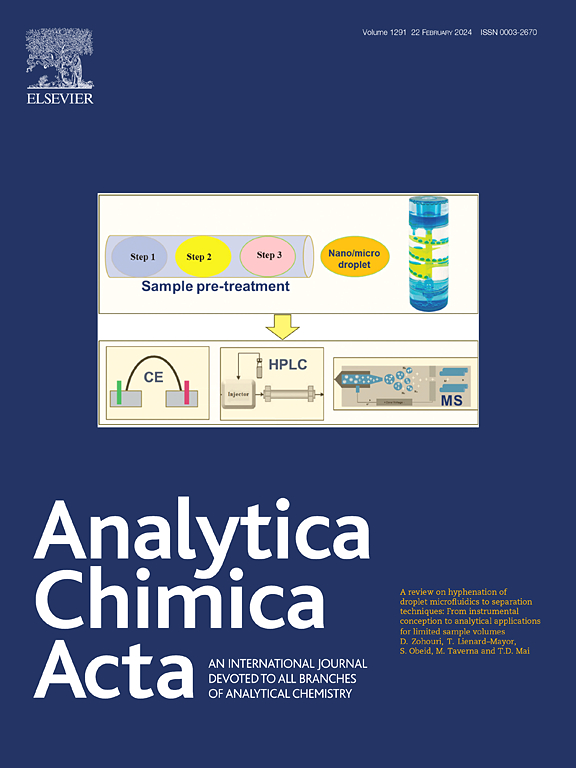Quantitative measurement method of equivalence ratio based on temperature characterization in actual methane-air premixed flame
IF 5.7
2区 化学
Q1 CHEMISTRY, ANALYTICAL
引用次数: 0
Abstract
Background
Laser-induced breakdown spectroscopy (LIBS) has emerged as a powerful technique for equivalence ratio measurement, offering deeper insight into chemical reaction processes in combustion systems. However, in practical flame conditions, variations in the equivalence ratio are inherently coupled with variations in local gas temperature, which significantly affect the accuracy of LIBS measurements by altering spectral line intensity ratios.
Results
To mitigate the impact of local gas temperature, a hybrid correction method comprising two key steps is proposed. First, plasma-based reference signals are exploited to accurately characterize local gas temperature and correct the spectral line intensities accordingly. Second, the modified spectrum standardization method is applied to compensate for deviations in spectral line ratios. This approach significantly reduces deviations in line intensity ratios across different gas temperatures. Specifically, the AS_RSD of H/O ratio decreases from 25.96 % to 3.94 %. The H/O ratio measured at different flame positions can be regressed onto a unified calibration curve, with an R2 greater than 0.95. The robustness of the method is demonstrated on various line ratio pairs, such as H/O, C/O, H/N and C/N. This calibration model enables precise equivalence ratio determination throughout the entire flame field.
Significance
The hybrid correction method allows for the simultaneous and accurate measurement of both local gas temperature and equivalence ratio. By effectively mitigating the influence of temperature variations, this method represents a great progress in enhancing the accuracy of LIBS for equivalence ratio measurement in complex combustion environments.

基于实际甲烷-空气预混火焰温度表征的等效比定量测量方法
背景激光诱导击穿光谱(LIBS)已经成为一种强大的等效比测量技术,为燃烧系统中的化学反应过程提供了更深入的了解。然而,在实际的火焰条件下,等效比的变化必然与当地气体温度的变化相耦合,这会通过改变谱线强度比显著影响LIBS测量的准确性。结果为了减轻局部气体温度的影响,提出了一种包含两个关键步骤的混合校正方法。首先,利用基于等离子体的参考信号准确表征局部气体温度,并相应地校正谱线强度。其次,采用改进的光谱标准化方法对谱线比偏差进行补偿。这种方法显著降低了不同气体温度下线强度比的偏差。其中,H/O比的AS_RSD由25.96%下降到3.94%。不同火焰位置测得的H/O比可以回归到统一的标定曲线上,R2大于0.95。在H/O、C/O、H/N和C/N等不同的线比对上验证了该方法的鲁棒性。该校准模型能够在整个火焰场中精确地确定等效比。意义混合校正方法允许同时准确测量当地气体温度和等效比。该方法有效地减轻了温度变化的影响,在提高LIBS在复杂燃烧环境中当量比测量的精度方面取得了很大的进步。
本文章由计算机程序翻译,如有差异,请以英文原文为准。
求助全文
约1分钟内获得全文
求助全文
来源期刊

Analytica Chimica Acta
化学-分析化学
CiteScore
10.40
自引率
6.50%
发文量
1081
审稿时长
38 days
期刊介绍:
Analytica Chimica Acta has an open access mirror journal Analytica Chimica Acta: X, sharing the same aims and scope, editorial team, submission system and rigorous peer review.
Analytica Chimica Acta provides a forum for the rapid publication of original research, and critical, comprehensive reviews dealing with all aspects of fundamental and applied modern analytical chemistry. The journal welcomes the submission of research papers which report studies concerning the development of new and significant analytical methodologies. In determining the suitability of submitted articles for publication, particular scrutiny will be placed on the degree of novelty and impact of the research and the extent to which it adds to the existing body of knowledge in analytical chemistry.
 求助内容:
求助内容: 应助结果提醒方式:
应助结果提醒方式:


